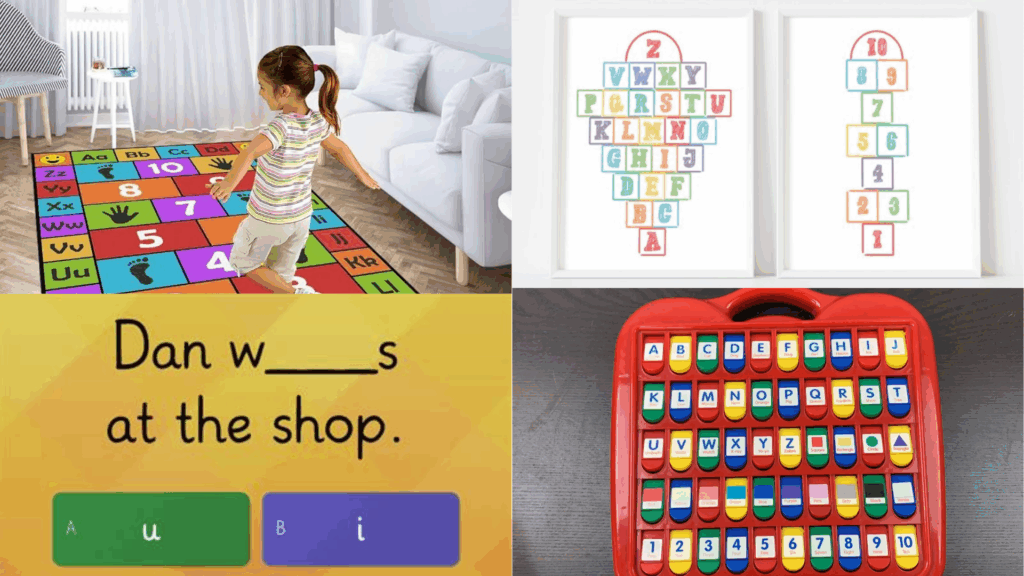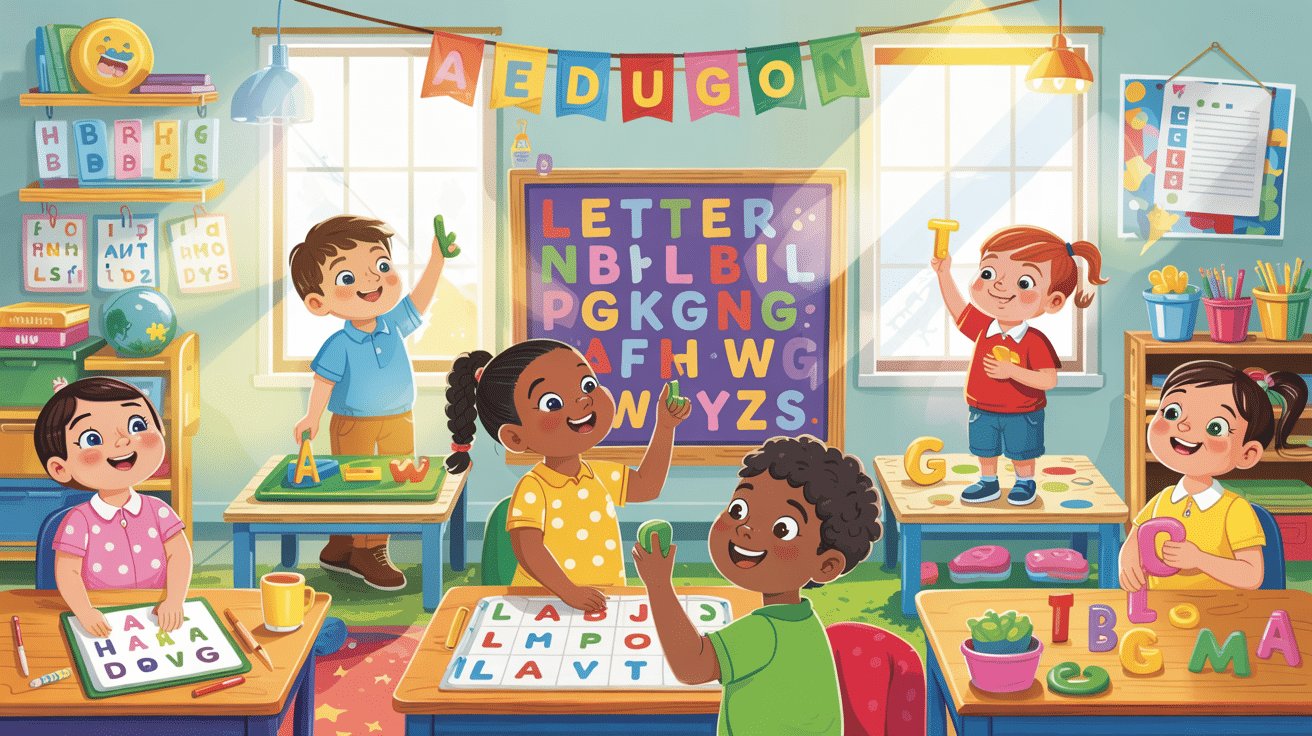Attention! Your training begins now. Top secret letter identification missions await in the classroom headquarters. Operation a-to-z is officially activated.
Prepare to decode mysterious symbols hidden in plain sight. Our surveillance indicates that mastering these 17 covert activities will change you into elite letter recognition operatives.
Your mission includes cracking letter codes through sensory intelligence, field operations, and classified games that appear ordinary to untrained eyes.
Remember – letters are everywhere, watching and waiting to be Check outed. stay alert as you practice these essential spy skills.
Why is Letter Identification Important for Young Children?
Letter identification helps kids take their first steps toward reading success! When children learn to spot and name letters, they build the foundation for all future reading and writing skills.
Key Benefits of Letter Identification:
- Reading Readiness: Kids who know their letters have an easier time learning to read words later on.
- Brain Development: Learning letters creates important connections in a child’s brain that help with all kinds of learning.
- Better Focus: Letter activities help children practice paying attention and remembering things.
- Eye Skills: Telling ‘b’ from ‘d’ helps kids notice small differences in everything they see.
- Hand Control: Tracing and writing letters makes small hand muscles stronger for writing and other tasks.
- Confidence Boost: Mastering letters gives kids a sense of success that makes them want to learn more.
- Language Connection: Understanding that letters stand for sounds is a big “aha!” moment in learning to read.
When children enjoy letter activities, they’re not just learning the ABCs – they’re building brain power that helps them in school and life!
Interactive Letter Activities to Improve Identification Skills

1. Alphabet Hopscotch
Change a traditional hopscotch game by replacing numbers with letters.Children hop through the grid, calling out each letter they land on and reinforcing letter recognition.
- Materials needed:Chalk or tape, open space.
- Skills developed:Letter recognition, gross motor skills.
- How to play:Draw a hopscotch grid with letters. Children take turns hopping through, saying each letter aloud as they land on it.
2. Alphabet Hide-and-Seek
Hide magnetic or paper letters around the room.Children search for the letters, and upon finding one, they identify and say its name.
- Materials needed:Alphabet letters, hiding spots.
- Skills developed:Letter identification, observation skills.
- How to play:Hide letters around the room. Children find and name each letter they check out.
3. Letter Flashcards
Use flashcards to practice letter naming quickly.Incorporate games like matching or memory with the flashcards to make learning engaging.
- Materials needed:Letter flashcards.
- Skills developed:Letter recognition, memory skills.
- How to play:Show flashcards to the child, asking them to name each letter. Mix in matching or memory games for added fun.
4. Alphabet Island (Shark Game)
Children flip over a card showing an uppercase letter and must find the lowercase match on the board.If they find a “shark,” they must feed one of their tokens to the shark.
- Materials needed:Alphabet cards, game board, tokens.
- Skills developed:Letter matching, decision-making.
- How to play:Players draw uppercase letter cards and find the matching lowercase letter on the board, avoiding sharks.
5. Missing Letter Deck
Use decks similar to flashcards but with a letter missing from a 3-letter alphabet sequence.
Encourages children to identify and fill in the missing letter, boosting cognitive skills and letter sequencing.
- Materials needed:Customized letter decks with missing letters.
- Skills developed:Letter sequencing, problem-solving.
- How to play:Present a sequence with a missing letter; the child identifies and fills in the correct letter.
6. Roadrunner Read
Introduce a quick warm-up where students race to identify the focus letter sound among other letters.
Helps with speed and fluency in letter recognition, making learning letters a fun, competitive activity.
- Materials needed:Letter cards or board.
- Skills developed:Letter-sound association, quick recognition.
- How to play:Display multiple letters; children quickly identify and point to the target letter when called out.
7. Pudding Letters
Fill the bottom of paper plates with pudding.When you say a sound, kids write the corresponding letter in the pudding, combining sensory play with letter formation practice.
- Materials needed:Pudding, paper plates.
- Skills developed:Letter formation, sensory exploration.
- How to play:Say a letter sound; children write the corresponding letter in the pudding using their finger.
8. Alphabet Dice and Spinner Games
Use dice and spinners with letters to create interactive games.Children roll or spin to select a letter and then identify or write it, adding an element of chance to letter learning.
- Materials needed:Alphabet dice, spinners.
- Skills developed:Letter recognition, fine motor skills.
- How to play:Roll the dice or spin to select a letter; children identify or write the chosen letter.
9. Alphabet Pocket Matching Game
Create pockets labeled with letters and have children match corresponding letter cards or objects.Reinforces letter-object associations and encourages sorting and categorization skills.
- Materials needed:Labeled pockets, letter cards or objects.
- Skills developed:Letter recognition, categorization.
- How to play:Children match letter cards or objects to the correct labeled pocket.
10. Letter Bingo
Play a traditional bingo game using letters instead of numbers.Children mark off letters as they are called out, promoting attentive listening and letter recognition.
- Materials needed:Letter bingo cards, markers.
- Skills developed:Letter recognition, listening skills.
- How to play:Call out letters; children mark them on their bingo cards, aiming to complete a row.
11. Alphabet Sensory Bin
Set up a sensory bin with sand, rice, or cornmeal and hide plastic alphabet letters inside.
Challenge students to find a letter, identify its name and sound, combining tactile exploration with learning.
- Materials needed:Sensory bin, alphabet letters.
- Skills developed:Letter recognition, sensory development.
- How to play:Children search the bin for letters, identifying each one they find.
12. Letter Bean Bags
Write letters on dried beans and have children pick a bean and identify the letter.They can also use the letter in a word or sentence, making it a simple, hands-on activity for letter practice.
- Materials needed:Dried beans, marker.
- Skills developed:Letter recognition, vocabulary building.
- How to play:Children pick a bean, say the letter, and use it in a word or sentence.
13. Alphabet Memory Game
Create pairs of cards with uppercase and lowercase letters for children to match.Enhances memory and letter recognition skills, and can be played individually or in groups.
- Materials needed:Letter cards.
- Skills developed:Memory, letter matching.
- How to play:Lay cards face down; children flip two at a time, trying to find matching pairs.
14. Alphabet Puzzles
Use puzzles that require matching letters to images or other letters.Supports visual recognition and fine motor skills, making learning letters an interactive experience.
- Materials needed:Alphabet puzzles.
- Skills developed:Letter recognition, fine motor skills.
- How to play:Children assemble puzzles by matching letters to corresponding images or letters.
15. Letter Sorting
Provide a mix of letters and have children sort them into categories.Categories can include vowels and consonants, or uppercase and lowercase, developing analytical thinking and categorization.
- Materials needed:Letter cards or tiles.
- Skills developed:Categorization, letter recognition.
- How to play:Children sort letters into designated categories based on given criteria.
16. Alphabet Tracing
Use worksheets or tactile materials like sandpaper letters for children to trace.Helps with letter formation and recognition, supporting handwriting development.
- Materials needed:Tracing worksheets, sandpaper letters.
- Skills developed:Letter formation, fine motor skills.
- How to play:Children trace letters using their finger or a writing tool, following the correct formation.
17. Alphabet Songs and Chants
Incorporate music and rhythm to teach letter names and sounds.Makes learning letters memorable and fun, engaging auditory learners effectively.
- Materials Needed: Alphabet songs or chants.
- Skills Developed: Auditory recognition, memory.
How Do Letter Identification Activities Upgrade Learning?
Letter identification activities make learning fun! When kids do fun activities to learn letters, they build a strong foundation for future learning success. These activities help kids in many ways!
First, they help kids get ready to read.
Letter activities prepare kids for reading because they need to know letters and their sounds to figure out words. When you play letter games, your brain gets stronger!
Fun activities like letter scavenger hunts help kids spot letters around them. You can use keyboards, magnetic letters, and even move your body to learn letters! These games make learning exciting.
Hands-on activities help kids remember letters better. You can use play dough, make letter cards, or find letters in your name. These fun games make learning stick in your brain!
When you learn letters through games, you don’t even know you’re learning! That’s why letter activities are super important for school success.
Conclusion
Ready to change your classroom into a letter-learning center? These 17 fun letter activities aren’t just games – they’re tools that build key skills for lifelong learning.
By turning letters into escapades through hopscotch, sensory bins, and memory games, you’re helping build brain connections that support reading while improving hand skills.
The beauty of letter activities is how simple and useful they are. when children play with letters using all their senses, they gain confidence, get better at remembering things, and learn to focus – all while having fun!
Start using these activities today and watch your young learners grow into happy readers. Remember, every letter game is another step toward reading success!




